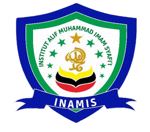Pendampingan Revitalisasi Pendapatan melalui Sabun Kunyit, Solusi Inovatif Kesinambungan Pendapatan Ibu Rumah Tangga
DOI:
https://doi.org/10.65065/mt60yf59Keywords:
Pemberdayaan Ekonomi, Sabun Kunyit , Pendapatan, Ibu Rumah Tangga, AlamiAbstract
This community service activity aims to empower housewives through the production and sale of natural turmeric-based soap, which has the potential to increase family income. The activity method consists of several stages, including participant recruitment, training in turmeric soap making, and product marketing guidance. Data used included a survey of initial income, soap production levels, and additional income after sales. The results of the activity showed that participants were able to produce good quality soap and earn significant additional income. This activity had a positive impact on the household economy of participants, with an average increase in income of 30%. In addition, this activity also raised awareness of the importance of using natural, environmentally friendly products. These findings support the importance of empowering housewives through innovative products based on natural ingredients, which can serve as a model for economic empowerment programs in other regions
Downloads
References
Beganovic, S., & Wittmann, C. (2024). Medical properties, market potential, and microbial production of golden polyketide curcumin for food, biomedical, and cosmetic applications. Elsevier. https://www.sciencedirect.com/science/article/pii/S095816692400048X
BPS Indonesia. (2021). BPS Indonesia 2021. Statistik Indonesia 2020, 1101001.
Esatbeyoglu, T., Huebbe, P., Ernst, I. M. A., Chin, D., Wagner, A. E., & Rimbach, G. (2012). Curcumin-from molecule to biological function. Angewandte Chemie - International Edition, 51(22), 5308–5332. https://doi.org/10.1002/ANIE.201107724
Handayani, D., Halimatushadyah, E., Krismayadi, K., & Krismayadi, K. (2023). Standarisasi Mutu Simplisia Rimpang Kunyit Dan Ekstrak Etanol Rimpang Kunyit (Curcuma longa Linn). Pharmacy Genius, 2(1). https://doi.org/10.56359/pharmgen.v2i1.173
Klasen, S., Priebe, J., Economics, R. R.-A., & 2013, undefined. (2013). Cash crop choice and income dynamics in rural areas: evidence for post‐crisis Indonesia. Wiley Online Library, 44(3), 349–364. https://doi.org/10.1111/agec.12015
Li, D., & S, S. (2019). Health risks of chemicals in consumer products: A review. Elsevier. https://www.sciencedirect.com/science/article/pii/S0160412018320166
Mobeen, S., Butt, M., Sharif, M., … M. R.-P. and A. B., & 2021, undefined. (2022). 13. Hypoglycemic and hypolipidemic potential of turmeric and black cumin in rat model. Thepab.OrgS Mobeen, MS Butt, MK Sharif, M Rizwan, S AminPure and Applied Biology (PAB), 2021•thepab.Org, 11(1), 116. https://doi.org/10.19045/bspab.2022.110013
Narayana, A., Sumalatha, B., Babu, D. J., Venkateswarulu, T. C., Chandrasekhar, K., Rashmik, I., & Chandrika, V. (2024). Synthesis, Preparation, and Characterization of Natural Soaps from Some Selected Plant Extracts. Journal of Biochemical Technology, 15(1-2024), 6-11. https://pdfs.semanticscholar.org/3004/a7cacf31cbefea88a4f92e4cb0c759af32e8.pdf
Nasution, B., Siregar, M., Sukarja, D., & Lubis, T. M. (2018). Empowering The ‘Minister Of Finance’: An Effort To Improve The Financial Literacy Of Housewives. ABDIMAS TALENTA: Jurnal Pengabdian Kepada Masyarakat, 3(2), 194–201. https://doi.org/10.32734/ABDIMASTALENTA.V3I2.4045
Nguyen, L., Govindasamy, R., Mentreddy, & R., S. (2024). Turmeric trends: analyzing consumer preferences and willingness to pay. Frontiersin.Org, 8. https://doi.org/10.3389/FSUFS.2024.1359040/FULL
Peterson, C. T., Vaughn, A. R., Sharma, V., Chopra, D., Mills, P. J., Peterson, S. N., & Sivamani, R. K. (2018). Effects of turmeric and curcumin dietary supplementation on human gut microbiota: A double-blind, randomized, placebo-controlled pilot study. Journal of Evidence-Based Integrative Medicine, 23, 1–8. https://doi.org/10.1177/2515690X18790725
Prabawati, P. I., & Rahmawati, I. P. (2022). The effects of Environmental, Social, and Governance (ESG) scores on firm values in ASEAN member countries. Jurnal Akuntansi & Auditing Indonesia. https://doi.org/10.20885/jaai.vol26.iss2.art2
Rachmawan, D., Ratri, A., Fathy, R., Khair, M., & Rabbani, H. (2020). Fostering Development through Village Owned Enterprise (VEs) in Rural Area: A Comparative Study between Indonesia and China. https://doi.org/10.4108/EAI.12-11-2019.2293526
Sulaiman, E., Herlina, E., Widyastuti, S., & Widyastuti, S. (2022). Increasing The Productivity Of Housewives With Jelly Art Training. SOCIRCLE : Journal Of Social Community Services, 1(1), 1–5. https://doi.org/10.58468/SOCIRCLE.V1I1.1
Suryahadi, A., Suryadarma, D., & Sumarto, S. (2009). The effects of location and sectoral components of economic growth on poverty: Evidence from Indonesia. Journal of Development Economics, 89(1), 109–117. https://doi.org/10.1016/J.JDEVECO.2008.08.003
Wongthongdee, & Inprakhon, P. (2013). Stability of turmeric constituents in natural soaps. ScienceAsia,.InfoN Wongthongdee, P InprakhonScienceAsia,. https://doi.org/10.2306/scienceasia1513-1874.2013.39.477
Yektiningsih, E., & Handarista, P. (2022). Farmers’decisions In Tumeric Sales In Ngepung, Gresik Regency. Jurnal.Faperta.Untad.Ac.IdE Yektiningsih, PD Handarista, IT AmirAGROLAND The Agricultural Sciences Journal (e-Journal), •jurnal.Faperta.Untad.Ac.Id. http://jurnal.faperta.untad.ac.id/index.php/agroland/article/view/1474
Zarkasyi, Z., Fahmi, A., Riski, A., & Fazil, M. (2023). Pemberdayaan Ekonomi Ibu-Ibu PKK Melalui Pembuatan Kerajinan Tangan Merajut Di Desa Hagu Barat Laut Kota Lhokseumawe. Jurnal Malikussaleh Mengabdi, 2(2). https://doi.org/10.29103/jmm.v2i2.13617
Downloads
Published
Issue
Section
License
Copyright (c) 2025 Juli Meliza, Zuhri Zuhri, Edi Winata, Yeni Ariesa, Fenny Krisna Marpaung (Author)

This work is licensed under a Creative Commons Attribution-ShareAlike 4.0 International License.









